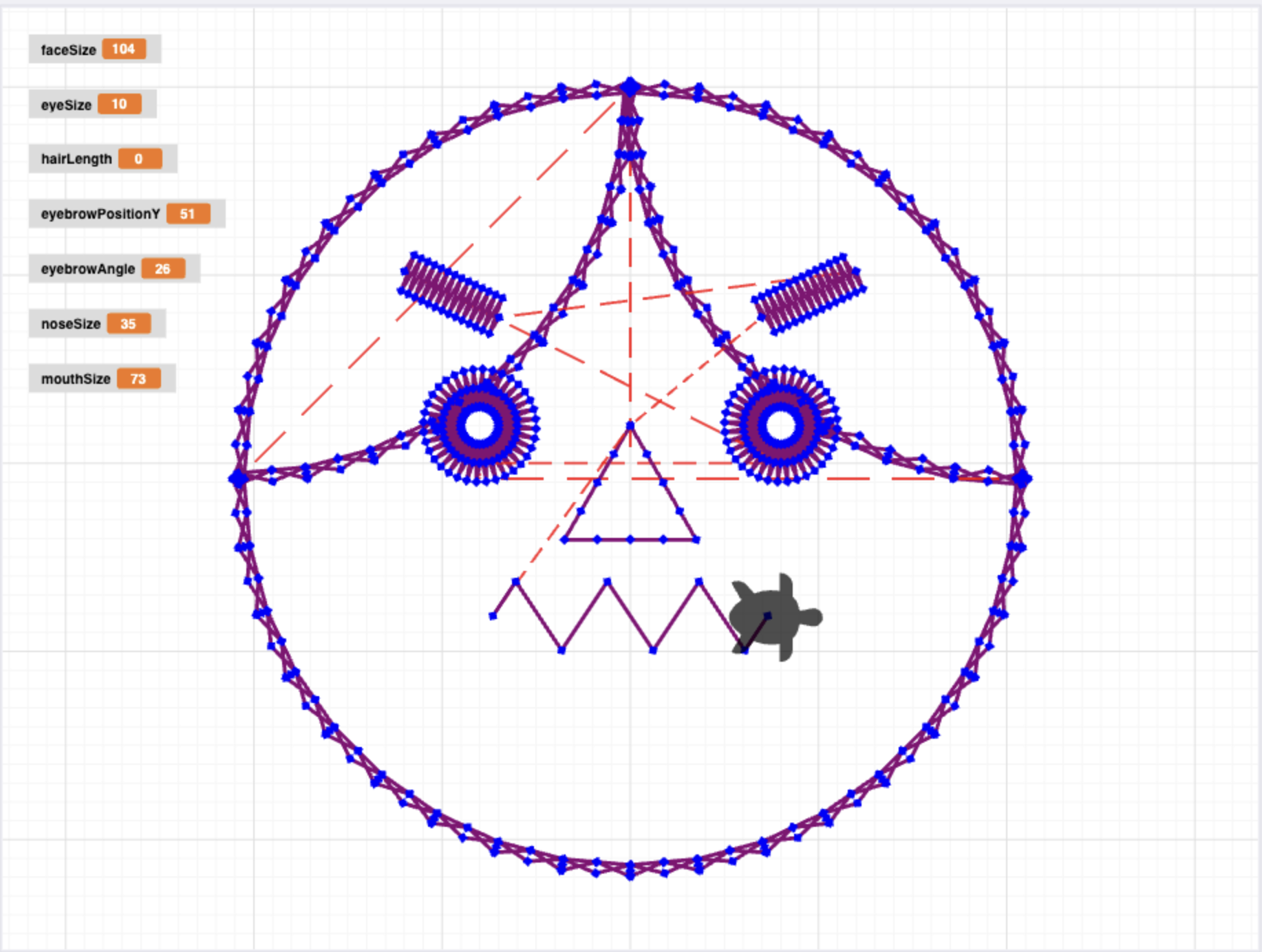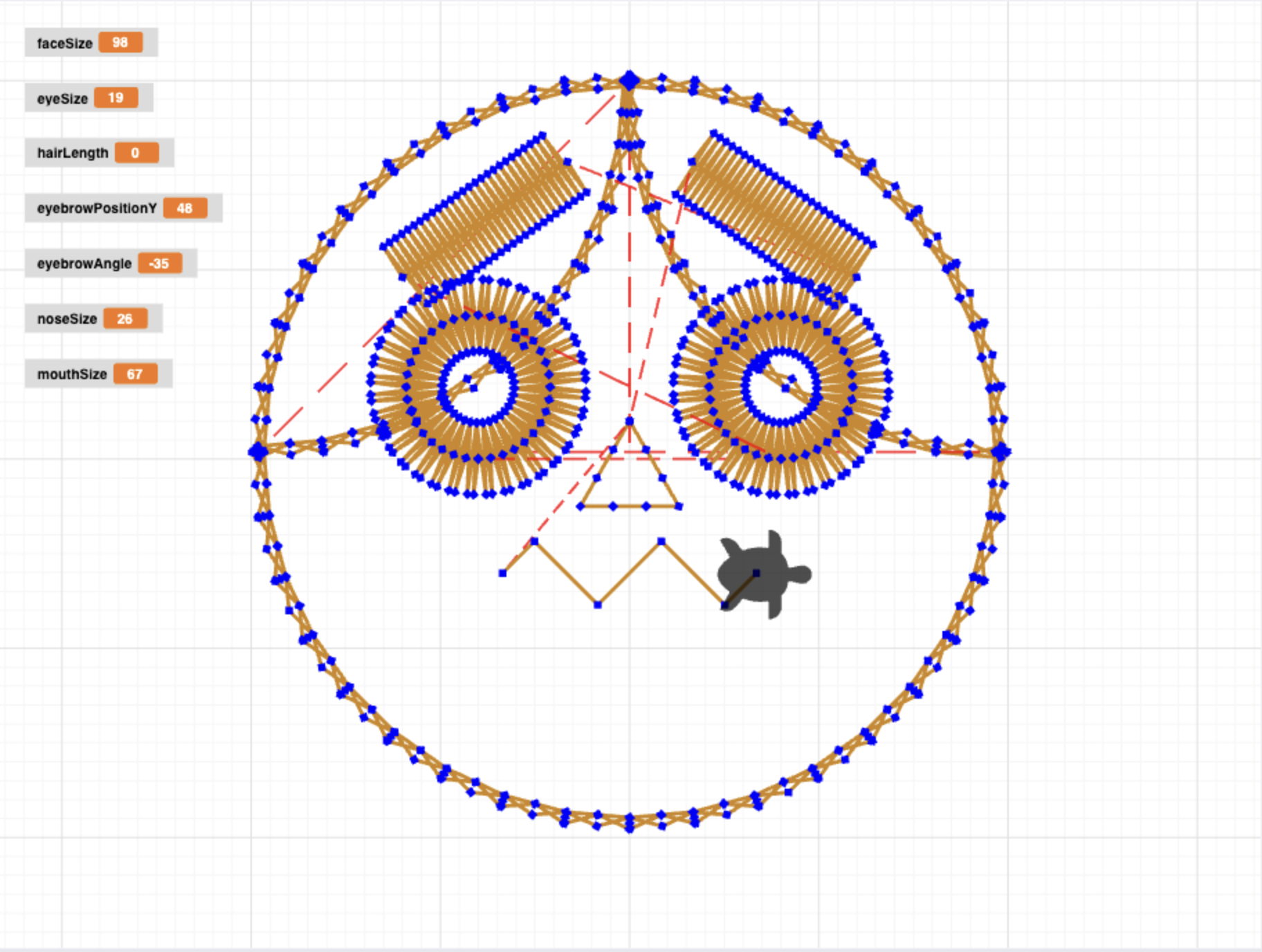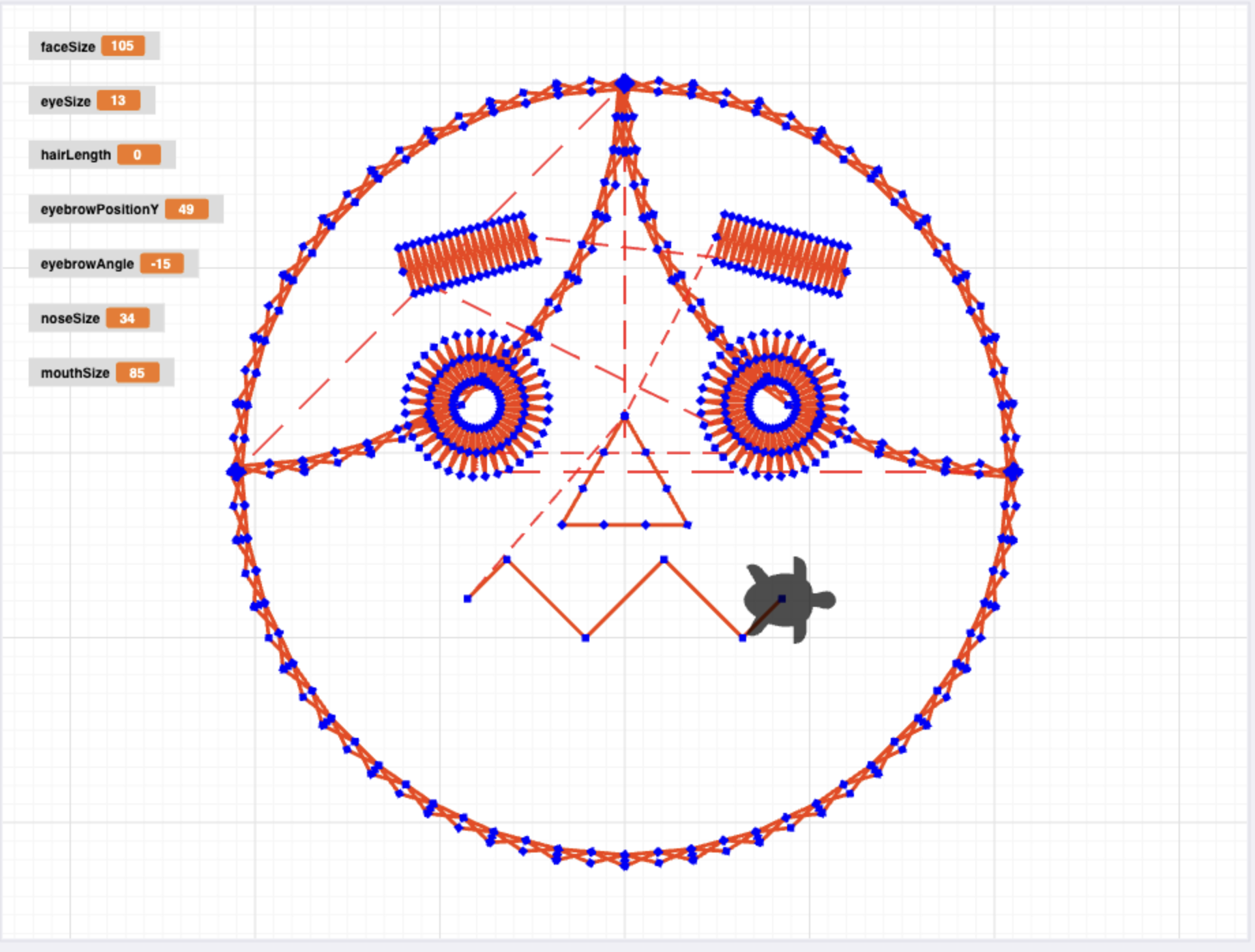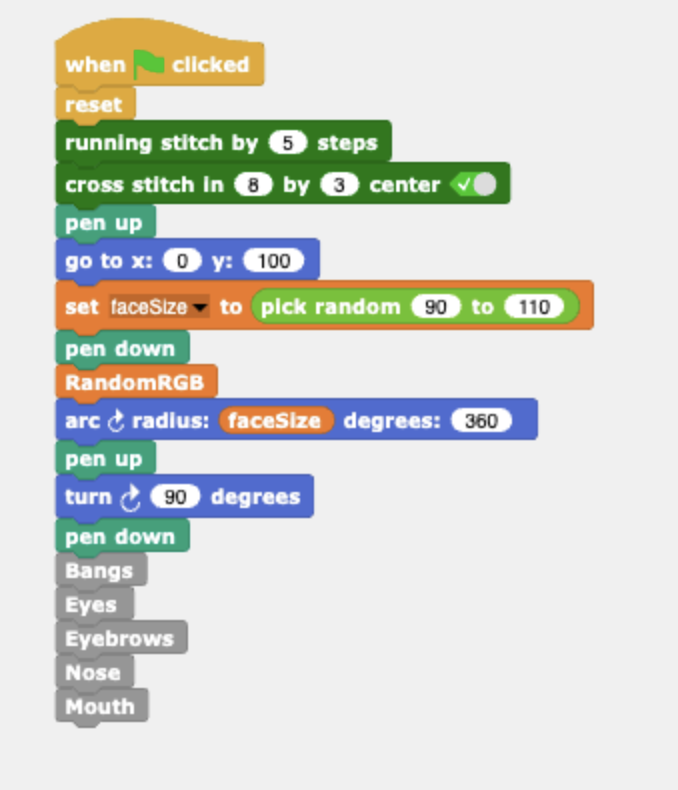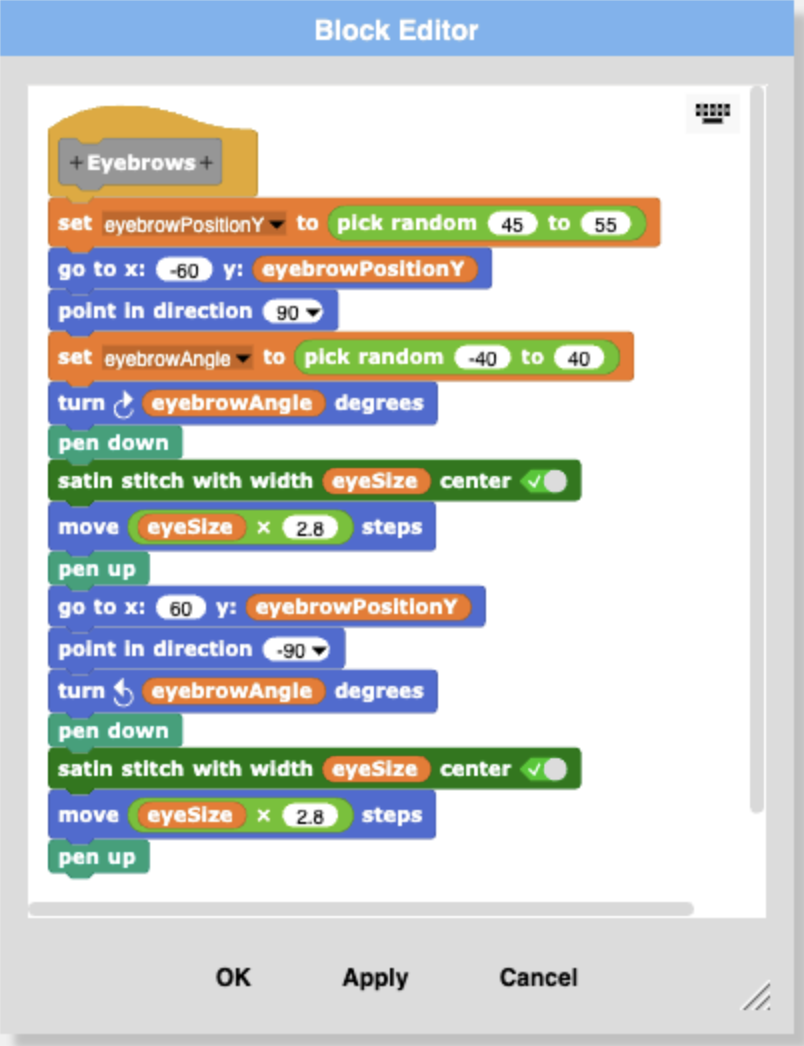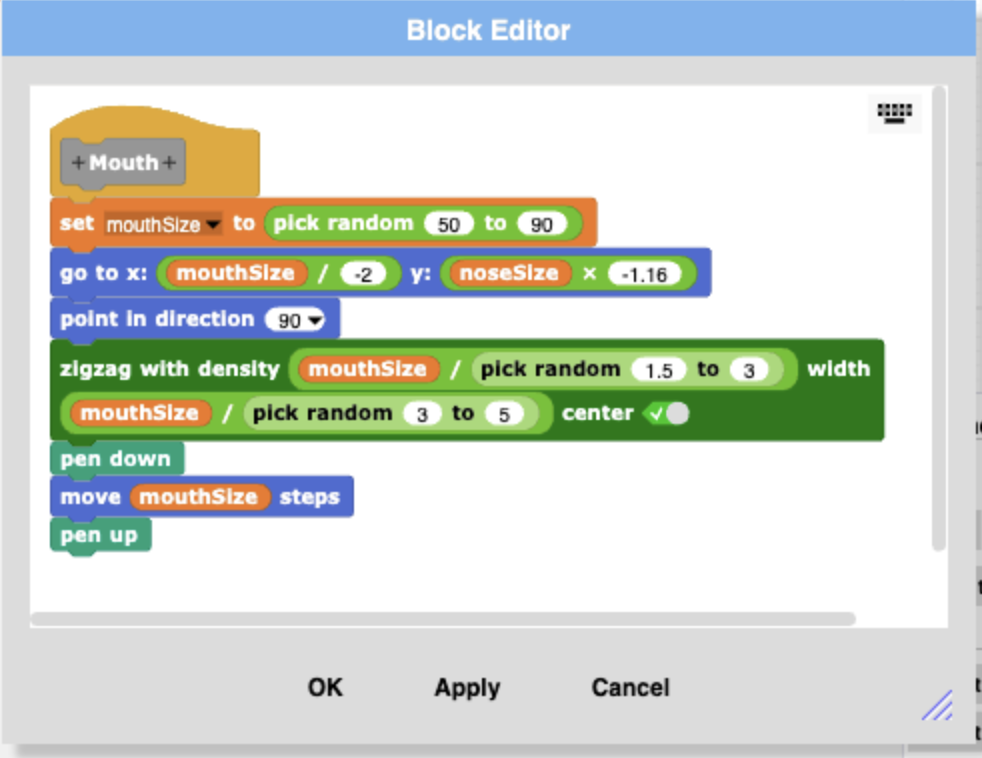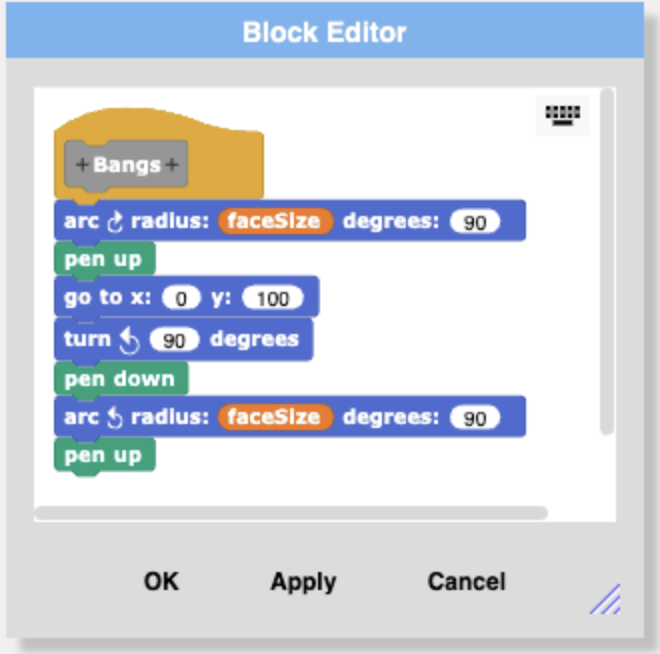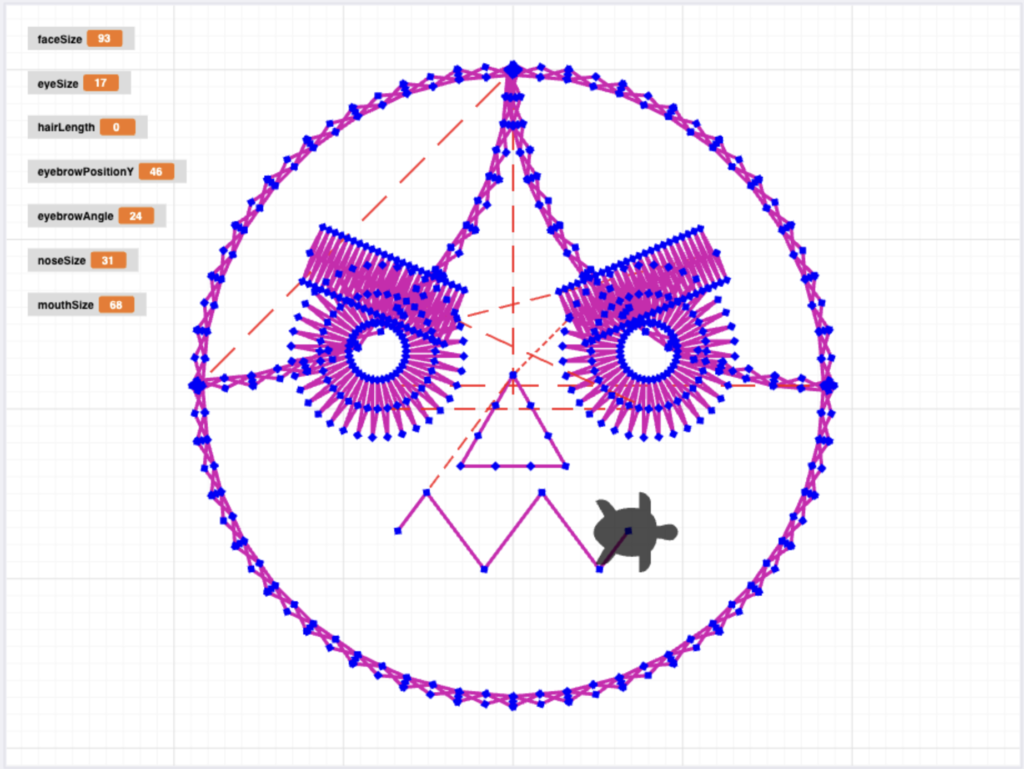
#TurtleStitch #DigitalEmbroidery
Parametric Faces
This project involves writing Turtle Stitch code to design a parametric face portrait with multiple dimensions of variability, such as size, position, color, and expression.
Check out the TurtleStitch Project Page of this program:
Explanation & Statement
Project Reflection
How my code works
The code is generally divided into 7 parts with 6 dimensions of variability: The face, the bangs, the eyebrows (size & angle), the eyes, the noses, the mouth(size & angle), the representing color. Among those. except the bangs, all other 6 parts are randomly generated whenever the green flag is clicked.

How I approached this project
The first thing I do is map out all of the key variations that I want to add to the face, then I start thinking about how to make different parts have different characteristics and run into more diverse ways of changing the face. After setting up the skeletons of this project, I used Procreate to mark the key metrics and coordinates. The coding can then begin!
Challenges
As TurtleStitch does not support "fill color", the main challenge for me is to use different kinds of embroidery methods such as Zigzag. To make the overall piece interesting and diverse, I spent some time selecting the right embroidery method for each step and making adjustments to the parameters as well. Additionally, I tried to figure out how to do the function "pick...from (1)(2)(3)", but I couldn't figure it out. Instead, I used the operator function: "pick random (1) to (2)", which also meets my needs.
Insights & Reflections
The process of digital fabrication and the art of digital embroidery intersect in fascinating ways, highlighting the close relationship between coding and design. Digital fabrication, as described, leverages digital design files to bring physical objects to life, fostering skills in engineering, design, and problem-solving. Similarly, the process of digital embroidery involves translating creative designs into tangible, stitched artwork through code. In the project at hand, code is utilized to manipulate six key dimensions of a digital face, including features like eyebrows, eyes, noses, mouth, and representing colors. This relationship between coding, design, and digital embroidery showcases the power of technology to merge artistic expression with precise execution. It aligns with the broader concept of digital fabrication, where learners and users can bring their creative visions to life in the physical world. The project's iterative approach also mirrors the advantages of digital fabrication, where rapid prototyping and experimentation accelerate the design process, when more and more prototypes being created, learners' abilities are improved without even being noticed.

